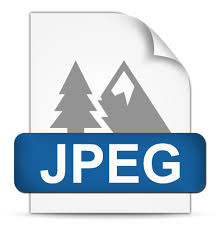Nowadays modern camera certainly offers three major file formats those are JPEG, RAW, and TIFF. But know, that all three of these formats have many differences which is in general can notbe distinguished. In fact, this format will determine the results of the picture that you take. Here’s the more complete explanation.
For those of you who need to capture the moment of event or party that will certainly generate a lot of photos. or for those who really great inexposure setting at any time and feel the results you take does not have to be edited again by photoshop afterward, then you can choose the JPEG format. Because of its small file size, so you have more space on your memory card.
The JPEG compression system is using the “loosy”mothod, along with the compression means the smaller file size, the image data is also missing. But the removal of the image data is made such way that it is not so noticeable visually when displayed on a computer monitor.

Perhaps many of people would have thought that RAW is an abbreviation. But it is’nt, RAW in english means “RAW” itself, the image that has not been processed, yet to be developed, or are still in need of repair. Otherwise, the JPEG file is an image that has matured by a digital camera,all of the adjustment, coloring process, lighting and sizing, had already finished by the camera. For those of you who want to take pictures of objects (photos of products or models) and you do not always get the perfect exposure and white balance and surely you will be using photoshop to match the images.
you are highly recommended to use the RAW format because the camera is not going to change anything but the image of result is a picture of what the camera sees. So you have full authority to change them to suit your desired images. The process of editing photos with RAW format does not cause any missing pixels. Because it is a universal file format so that the photo editing software can not directly read the format and we need conveter software to convert them into other formats.
If you’re photographing objects and you intend to print on large canvas, this mode is suitable for you. Because the image quality is so high that the size of the file for this format are usually very large, and in this file, image is not compressed. TIFF is a popular file format for still support compress picture, it does so in a way to ensure that the picture can always be recovered intact. No drop in image quality.
TIFF files can be saved in the format 16 bits or 8 bits and almost all the graphics software can read it. In fact, this format can store image data consisting of more than one layer, for example, the use of an alpha channel. Therefore, this is a very usual format used in the printing. Maybe for those who only have a small capacity memory card, this format is not recomended.


